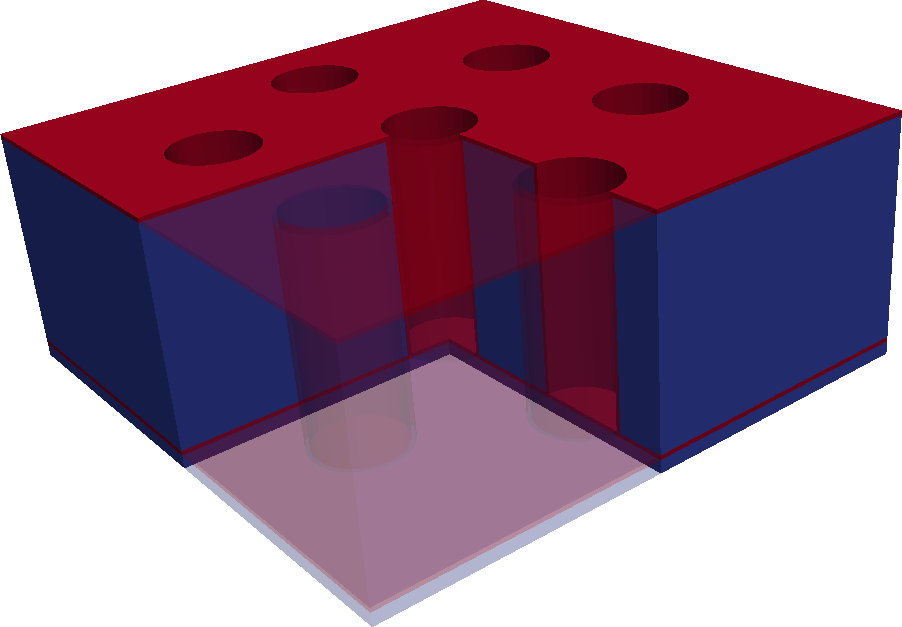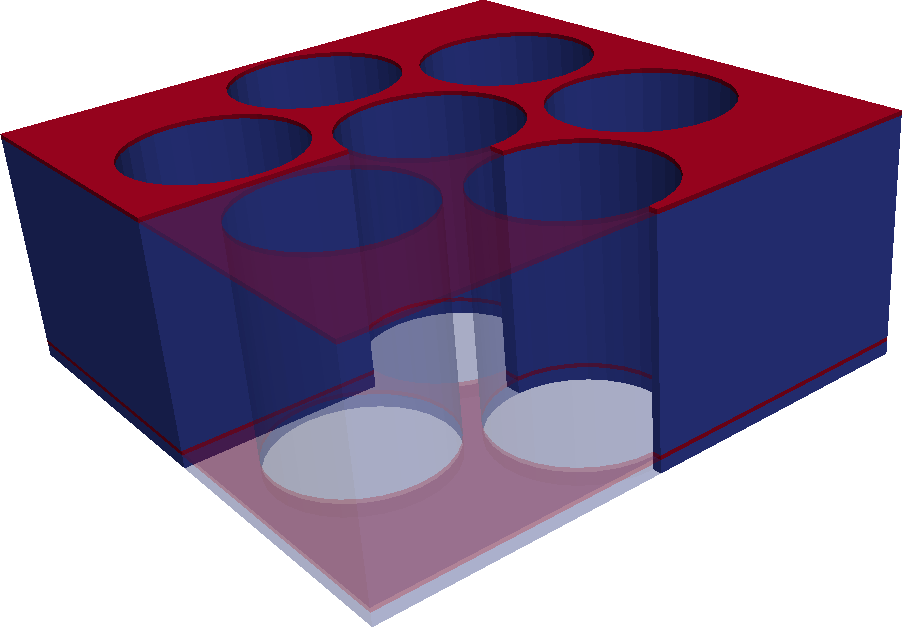Next: 7.5 FEM-based Symmetry Analysis using a Five-pointed Star Up: 7 Results and Applications Previous: 7.3 Rotational Symmetries Contents



The geometries of the beam bridge construction and the multiple open TSV structure are visualized in top left and bottom left, respectively. The pictures on the right show the templates for the bridge and the multiple open TSV structure. The bridge beam construction has two different templates being the beam and the beam connector. The templated structure consists of |
![\begin{subfigure}
% latex2html id marker 16257
[b]{0.48\textwidth}
\centering
...
...dth]{figures/benchmark/bridge_time}
\caption{Runtime speedups}
\end{subfigure}](img1535.gif)
![\begin{subfigure}
% latex2html id marker 16263
[b]{0.48\textwidth}
\centering
...
...width]{figures/benchmark/bridge_size}
\caption{Memory savings}
\end{subfigure}](img1536.gif)
Runtime and memory benchmark results are visualized for different cell count values on the left and on the right, respectively. The expected runtime speedups and memory savings are observed for high cell counts (larger than |
![\begin{subfigure}
% latex2html id marker 16277
[b]{0.48\textwidth}
\centering
...
...]{figures/benchmark/multi_tsv_time}
\caption{Runtime speedups}
\end{subfigure}](img1543.gif)
![\begin{subfigure}
% latex2html id marker 16283
[b]{0.48\textwidth}
\centering
...
...th]{figures/benchmark/multi_tsv_size}
\caption{Memory savings}
\end{subfigure}](img1544.gif)
Runtime and memory benchmarks results are visualized for different cell count values on the left and on the right, respectively. No correlation of the mesh cell count and the memory savings is observed. |
florian 2016-11-21